Last week, a friend and I were out snowshoeing in the Muleshoe area of Banff National Park where we came upon lots of moose tracks! My friend asked, “Is the plural of moose, meese?” I smiled, “Its moose. Let’s follow their tracks and see what we can find!”
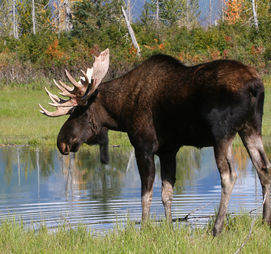
Moose are the product of the last ice-age, the Pleistocene, well-designed for an existence in cold, snowy, marshy country. Largest of all the deer species in North America, their shoulder height towers over 2m and weight averages at 450 kg (females 10% less) in the Canadian Rockies. Their long legs are built to wade through bogs in summer and cruise through snow in winter, which was evident of the tracks we found. Their hooves splay under load, increasing the surface area like a built-in snowshoe or like fins for swimming. By the size and depth of the tracks, I figured that we were following a female/cow with two calves! Even with snowshoes, we were sinking a good 20cm into the snow trying to navigate where they went!
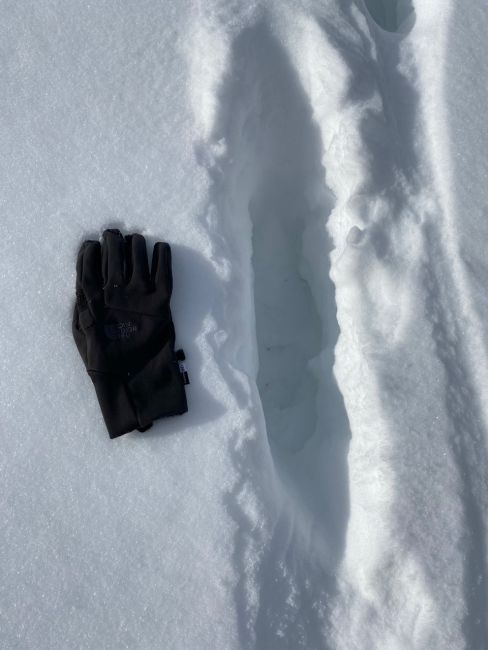
Although it was a sunny day, our winter layers were needed for the cold. Moose have a layers’ system too of thickened skin, a soft woolly undercoat, and long guard hairs on top. The guard hairs are hollow and fill with air for better insulation just like our down jackets, but these air-filled hairs are also a built-in PFD for swimming. Moose have a poor heat tolerance, so swimming is their summer coolant and have been known to paddle distances up to 16 km!
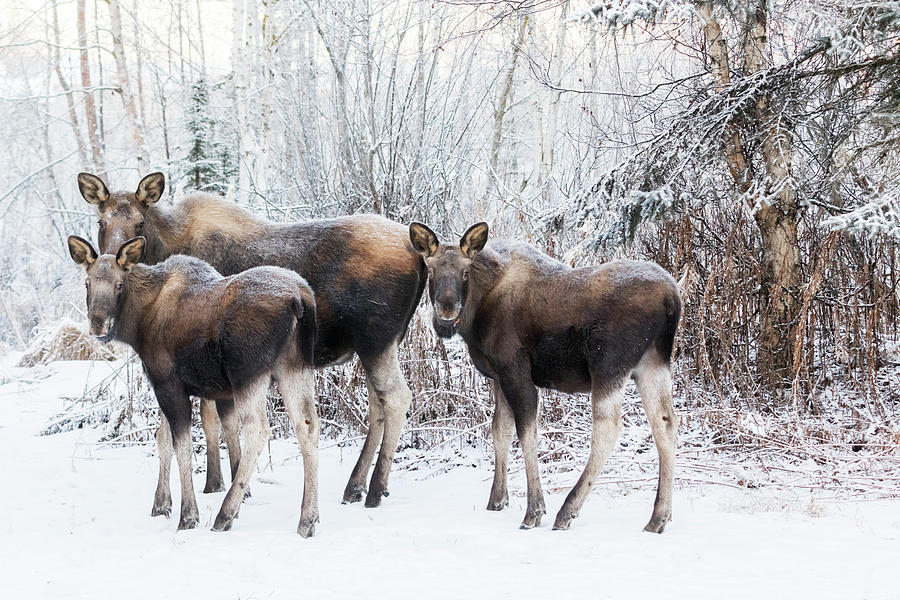
High above our heads we discovered where Mom and the kids had browsed on willow buds. Their winter staples are willows, red osier dogwood and shrub sized aspen and poplar. Summer staples are moist grasses, fresh shoots from willow and aspen that are high in sugar content but low in sodium. Aquatic plants found at the surface and 5 meters below provide sodium; comprising as much as half of their diet. Where do moose get their sodium in winter? By kneeling on roads to lick the highway salt, so watch for large dark shapes on roads at dusk as it may be a moose.
Due to their diet changing between seasons, moose scat changes too. Since their winter diet is drier and more fibrous, their scat is a pile of pellets, of which we saw a lot! I could even discern the cow’s pellets vs. her young, since her pellets are longer and narrower, while the young are smaller in size. Bull pellets are fatter and blockier. With a more greens in their summer diet, their scat is a 20-30cm plop or globby pellets.
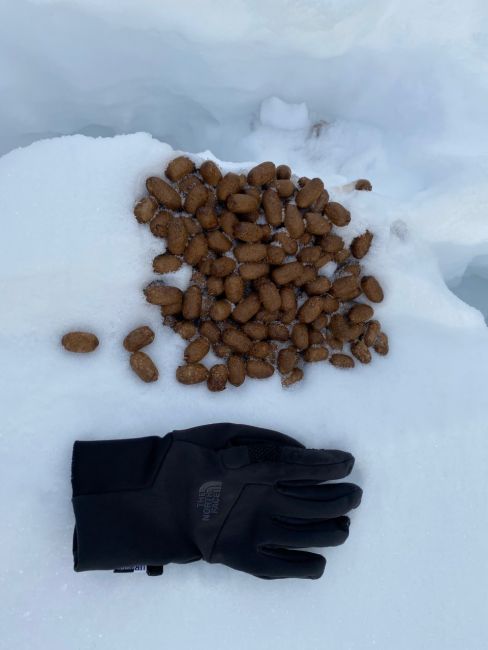
Right when we needed a rest, I discovered the first of three spots where they had stopped for a nap in the snow. Their body impressions were pristine, so I knew these would have been made in the past 24 hours. The final spot had all three of them lying closely together, right at the edge of the forest to keep track of predators, and probably where they had spent the night. Upon waking, each had their morning constitution near their beds before heading out for the day.
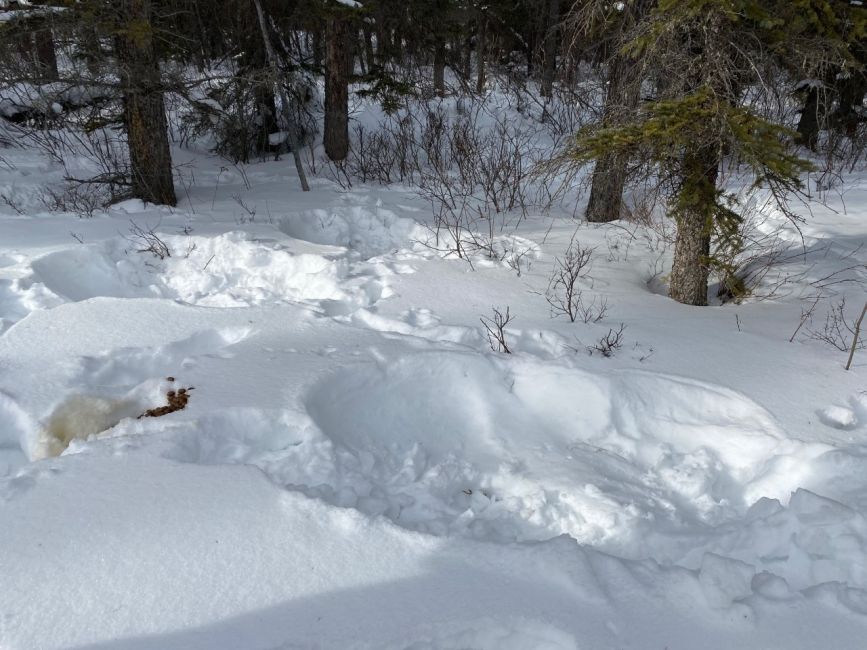
Although we never saw Mom and the kids, we saw ample evidence that they had been there. The next time you’re out snowshoeing in Banff National Park, keep your eyes peeled high and low for Moose SCI!
By Kristi Beetch
ACMG Day Hiking and Winter Travel Guide, IGA Master and Professional Interpreter